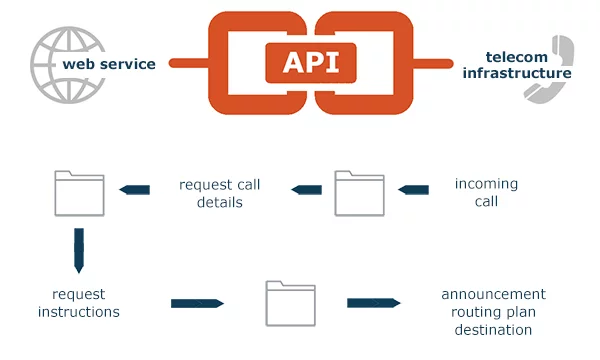
Voice API Integration
A Voice-API – also Speech-API – is a set of functions that allow a software application to initiate and receive calls without requiring the application developer to know details about telecommunication technologies and protocols. API providers like NextGenSwitch interfaces between the software application and the telecommunication provider.
The application, in the context of Voice-API, defines how calls will be handled and created. An application can be as complex as a call center solution routing thousands of calls from customers worldwide to technical support teams at multiple locations .